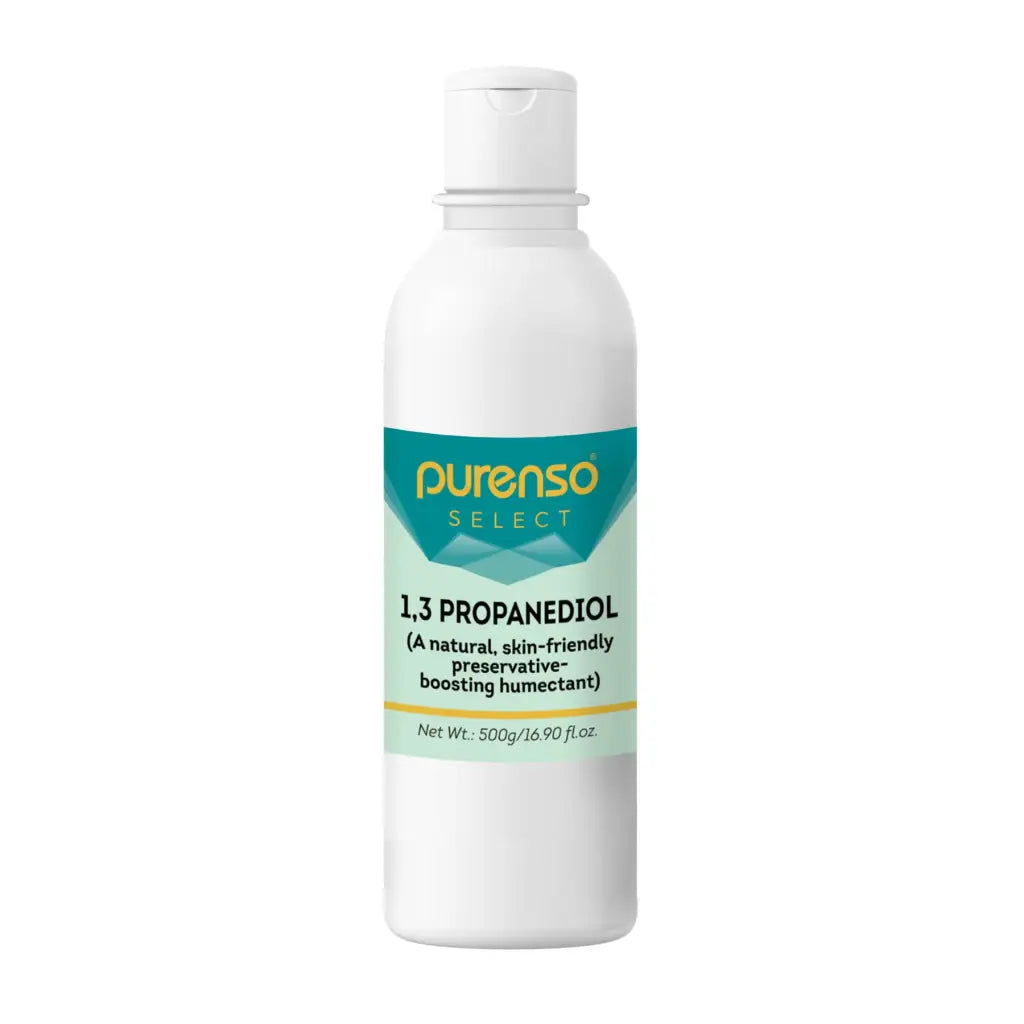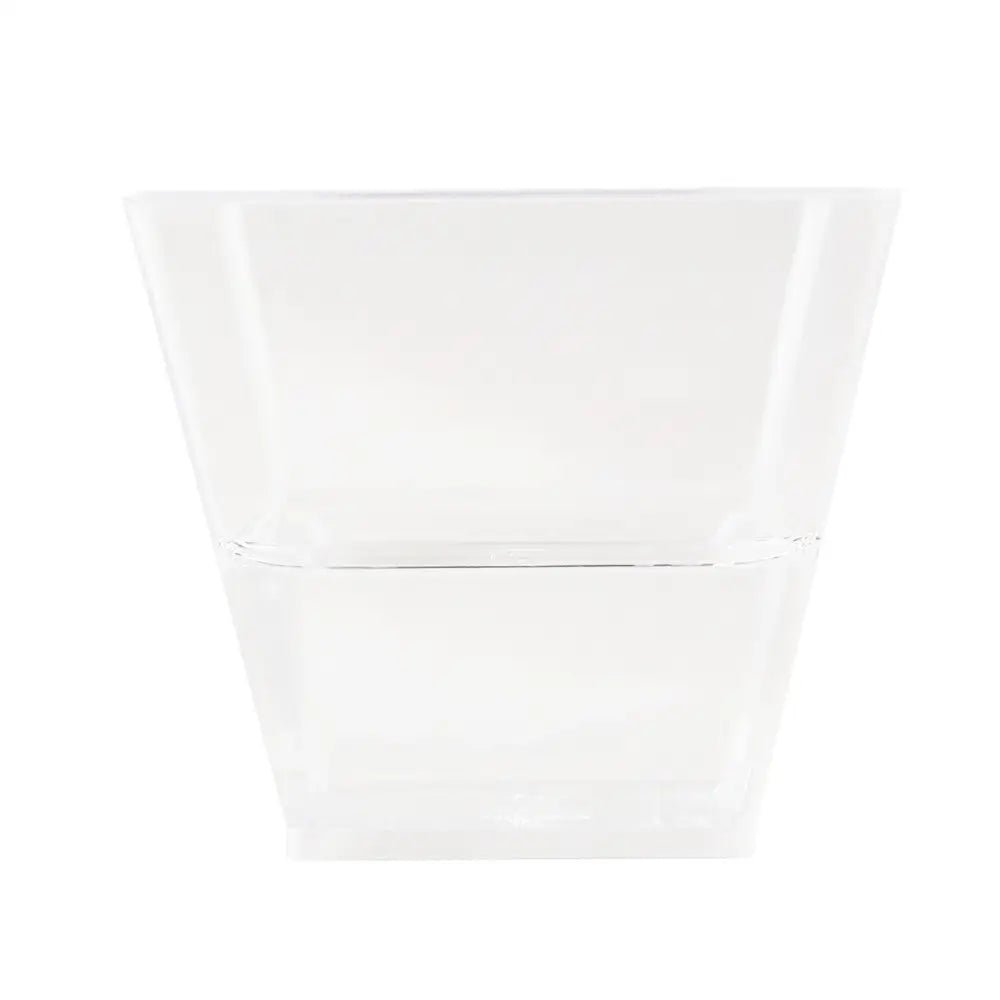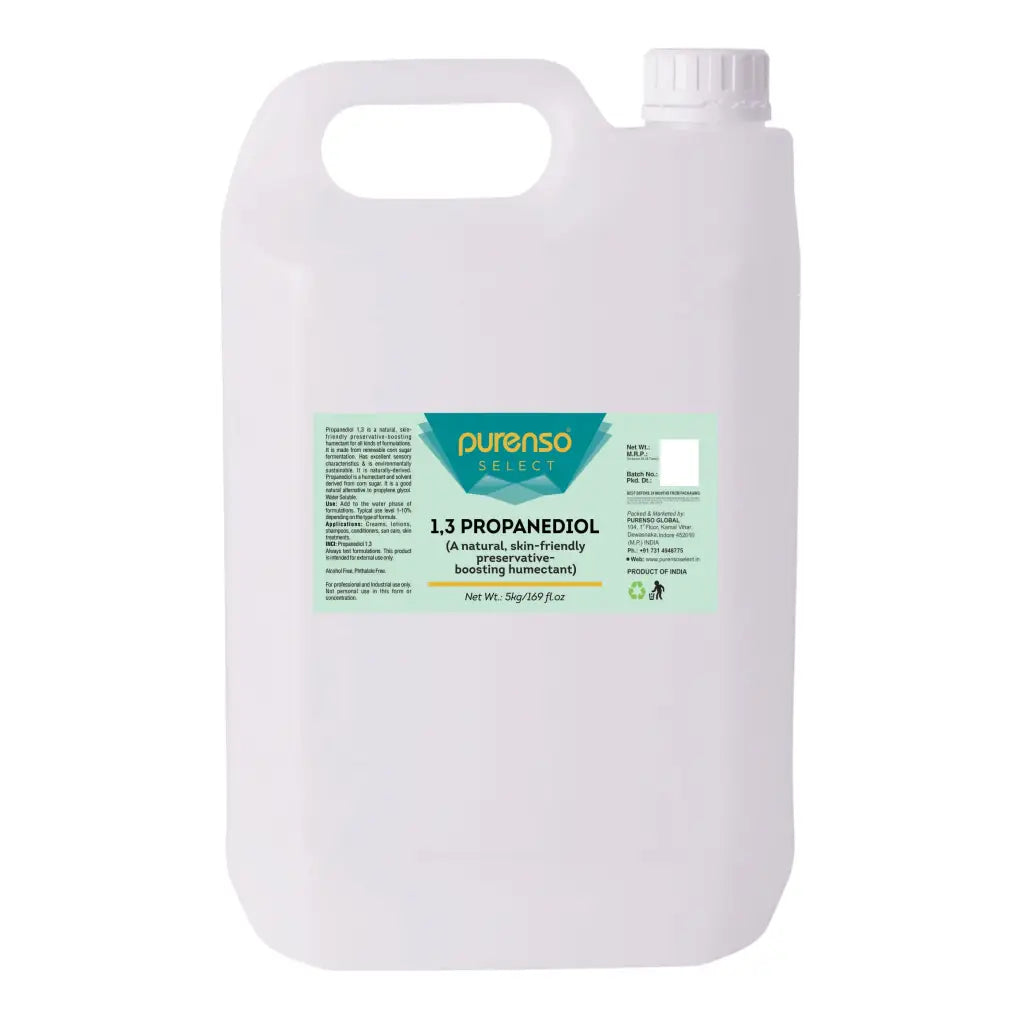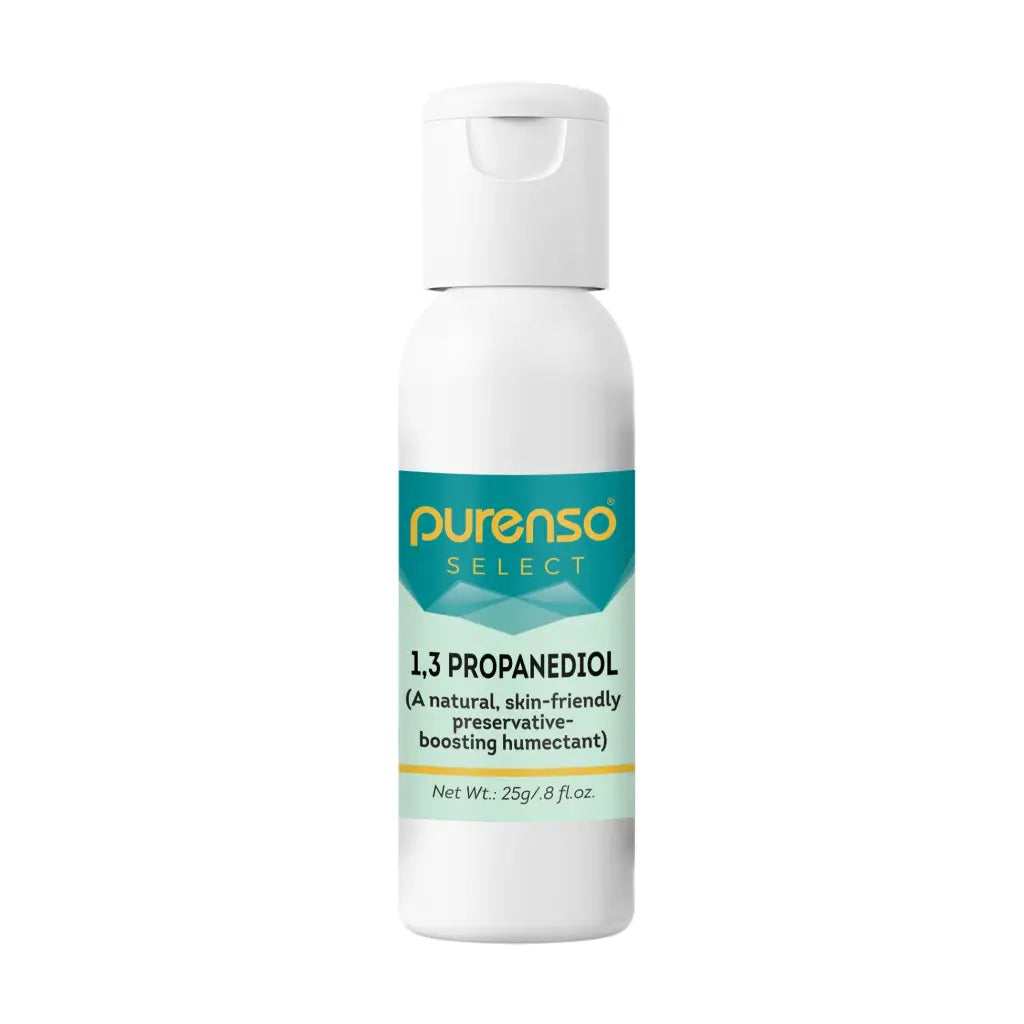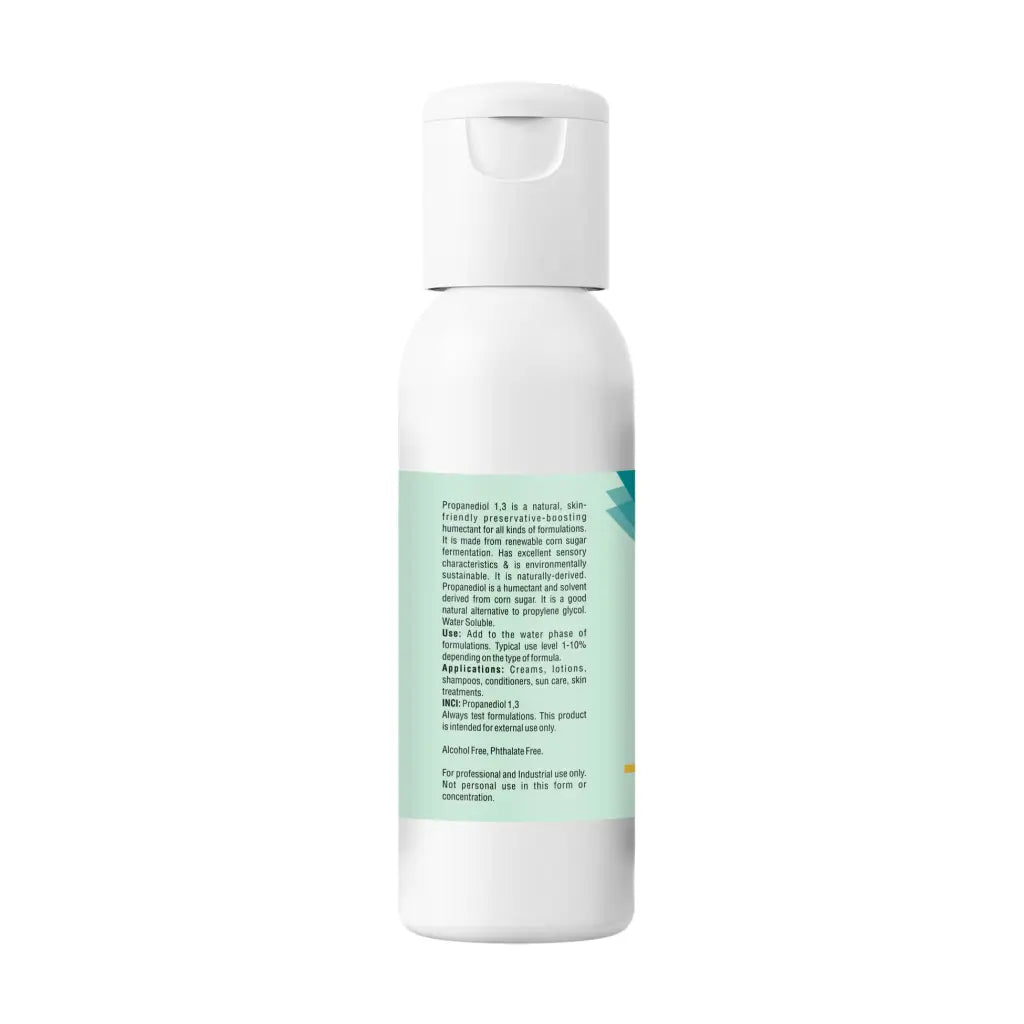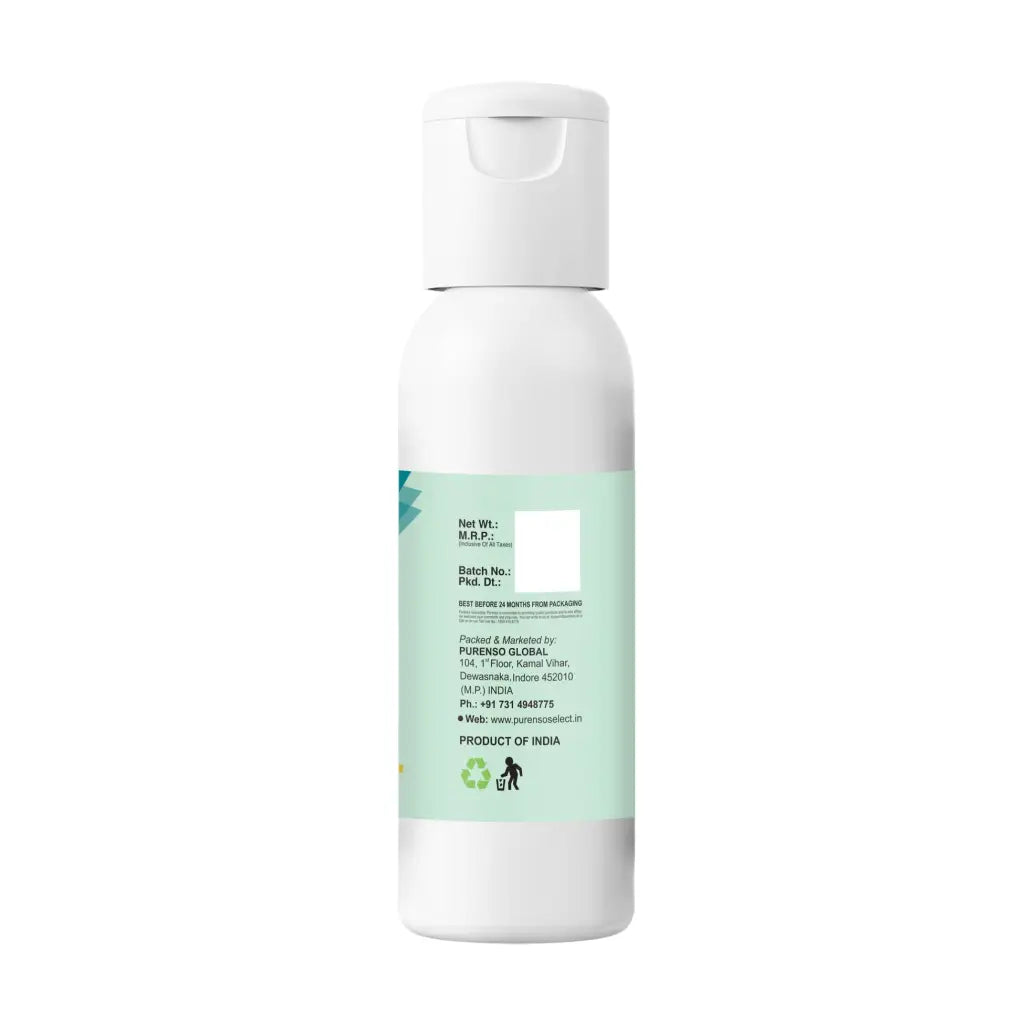






1,3 Propanediol/ Propanedial
| What is it? |
Propanediol is a humectant and solvent derived from corn sugar. It is a good natural alternative to propylene glycol. Propanediol 1,3 is a natural, skin-friendly preservative-boosting humectant for all kinds of formulations. Has excellent sensory characteristics & is environmentally sustainable. It is naturally-derived. |
| Appearance | Semi-viscous clear liquid |
| Texture | In products it tends to be smooth, but too much can be draggy |
| INCI | Propanediol |
| Usage rate | Add to the water phase of formulations. Typical use level 1-10% depending on the type of formula. For external use only. |
| Applications | Creams, lotions, shampoos, conditioners, sun care, skin treatments. |
| How to Work with It | Include it in your heated water phase or cold-process it if the recipe does not require heating. |
| Scent | Nothing very noticeable, slightly sweet |
| pH | 7 |
| Solubility | Water |
| Why do we use it in formulations? |
It’s a fantastic non-sticky humectant. We’ll often include it in products that we want to be super hydrating (facial lotions, winter products, etc.). We frequently choose it for inclusion in more watery products (things like facial mists, gels, and micellar waters) where a tacky skin-feel would be really noticeable, especially since it can help reduce the stickiness of glycerin. It helps add clarity and boosts both viscosity and flash-foam in surfactant products. It also increases the feeling of cleanliness on rinse-off. |
| Strengths | It’s a great non-sticky humectant that serves many other purposes. |
| Weaknesses | Can be harder to find than other humectants. |
| Alternatives & Substitutions | Vegetable glycerin is a decent alternative, though watch that you don’t include so much in the recipe that it starts to feel sticky. Propylene glycol would be a great alternative as they are very similar. |
| Benefits |
|
![]()
![]()
![]()
![]()
![]()


